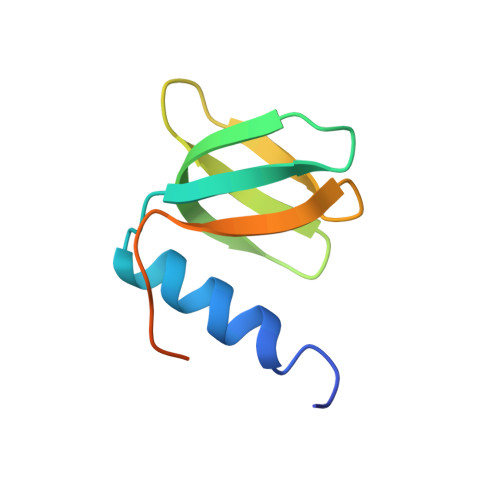Effect of conserved intersubunit amino Acid substitutions on hfq protein structure and stability.
Murina, V.N., Melnik, B.S., Filimonov, V.V., Uhlein, M., Weiss, M.S., Muller, U., Nikulin, A.D.(2014) Biochemistry (Mosc) 79: 469-477
- PubMed: 24954598
- DOI: https://doi.org/10.1134/S0006297914050113
- Primary Citation of Related Structures:
4MMK, 4MML - PubMed Abstract:
Hfq is a thermostable RNA-binding bacterial protein that forms a uniquely shaped homohexamer. Based on sequence and structural similarity, Hfq belongs to the like-Sm (LSm) protein family. In spite of a rather high degree of homology between archaeal and eukaryotic LSm proteins, their quaternary structure is different, usually consisting of five to eight monomers. In this work, the importance of conserved intersubunit hydrogen bonds for the Hfq spatial organization was tested. The structures and stabilities for the Gln8Ala, Asn28Ala, Asp40Ala, and Tyr55Ala Hfq mutants were determined. All these proteins have the same hexamer organization, but their stability is different. Elimination of a single intersubunit hydrogen bond due to Gln8Ala, Asp40Ala, and Tyr55Ala substitutions results in decreased stability of the Hfq hexamer. Tyr55Ala Hfq as well as the earlier studied His57Ala Hfq has reduced protein thermostability, which seems to correspond to an opening of the protein hydrophobic core.
Organizational Affiliation:
Institute of Protein Research, Russian Academy of Sciences, Pushchino, Moscow Region, 142290, Russia. [email protected].


















